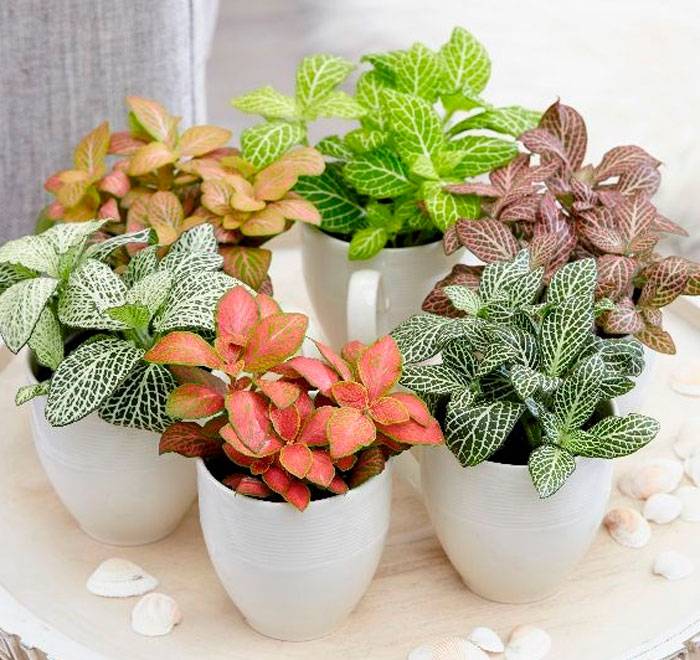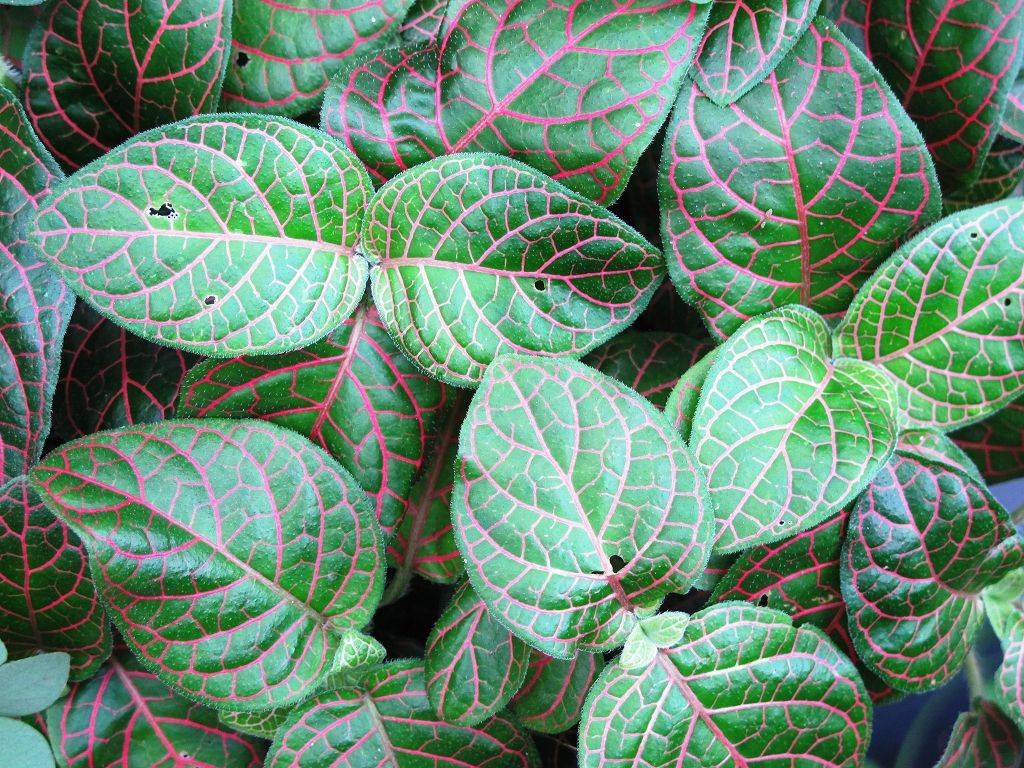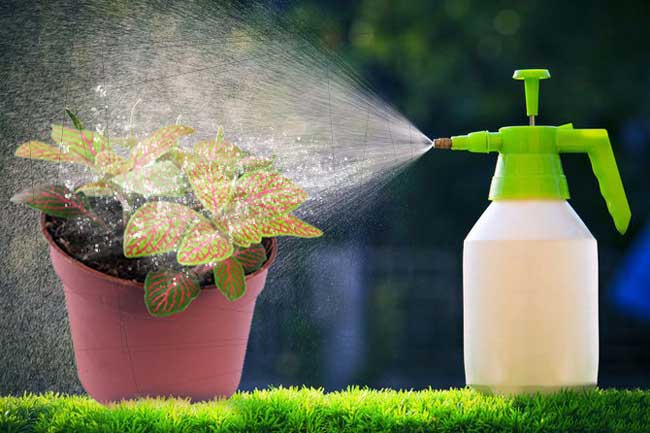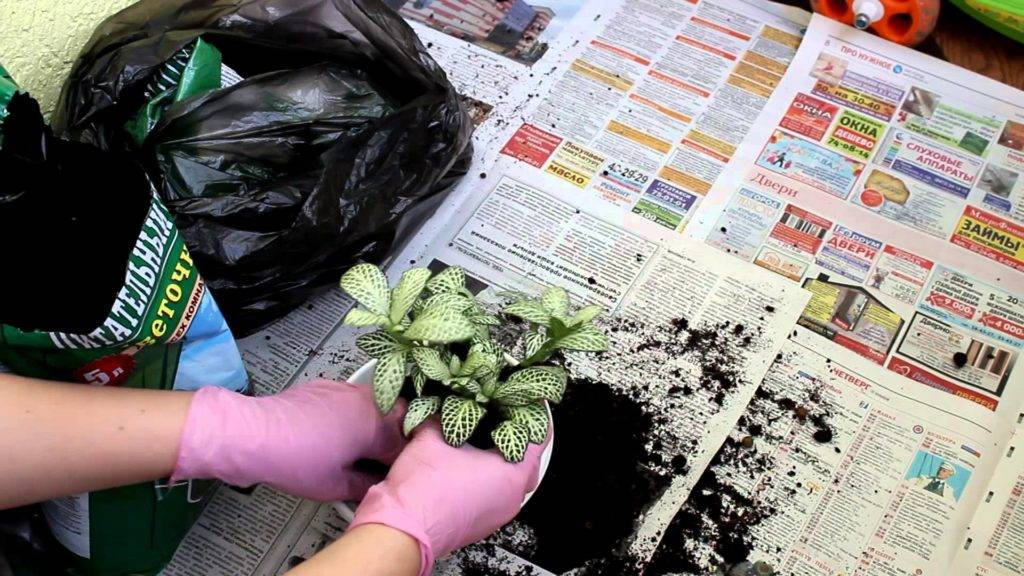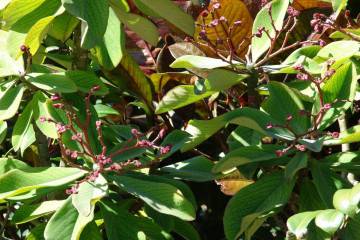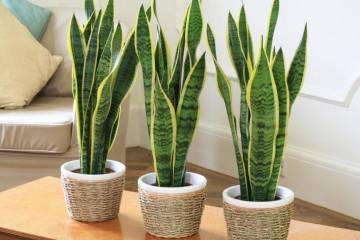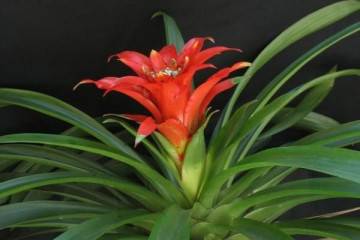Fittonia mix - home care
Content:
Quite often, in homes and offices, you can find a houseplant with a bright and exotic color of foliage and unusual veins. This is a Fittonia mix, which is not one plant variety, but a set, consisting of several, planted in one pot (therefore, a mix).
Fittonia description
This houseplant is ornamental, belongs to the Acanthus family. Usually, a mini-flower bed of 5-6 varieties of Fittonia is formed in a pot. The leaves of the flower are its main decoration: they are quite long (up to 10 cm), oval, can be painted in shades of green, white, lilac and even red. The veins are also different in color, they are silvery, pink, dark greenish and white.
Common varieties
The genus of the plant is very small, but botanists have described only ten varieties (indoor and even less). The most popular are:
- Skeleton - a plant with creeping shoots and small (1-2 cm in length) leaves of olive color with reddish veins;
- fittonia Vershaffelt - one of the most spectacular species (popular varieties - silvery, red, Josan, White Anna), which has large ovoid leaves of dark green color with silvery or red veins;
- giant is distinguished by straight shoots, red-purple stems and dark green leaves with a shiny surface painted with red small patterns.
History of appearance
South America (Peru) is considered the birthplace of this perennial herbaceous plant. The name was given on behalf of the Fitton sisters, who published the first botanical book describing plants.
Features of caring for fittonia at home
Fittonia mix requires careful home care. Since the flower is native to the south, it loves a warm and humid climate.
Temperature
It is necessary to constantly maintain a comfortable temperature for this heat-loving culture. It should be constant, because the plant reacts poorly to changes in the microclimate. For the summer period, the optimum temperature is from 22 ° С to 25 ° С (not higher than 27 ° С), and in winter not lower than 18 ° С.
Lighting
The plant almost does not tolerate direct sunlight, but it will not grow in the shade either. Light partial shade will be optimal.
South windows are not very suitable for fittonia, it will be best on the east or west side of the house.
Watering
Since the genus Fittonia comes from the humid tropics, it is necessary to provide these flowers with the usual moisture level for home care. The perennial is watered with water, which has stood for some time and brought to room temperature. In summer, the flower needs to be watered a lot and often. However, you should not be zealous either, otherwise the water may stagnate in the pot, which will negatively affect the flower.
Spraying
Periodic (at least 1 time per day, and preferably twice) moistening with a soft water sprayer is a mandatory care procedure for this household representative. A pallet with wet expanded clay (or moss) can be a substitute. If the air humidity is not maintained in this way, pests will start in the foliage.
Humidity
The humidity in the room where the plant stands must be high enough (otherwise the flower will dry out). Such a microclimate is easy to maintain, for example, in a flask where a miniature flower is placed.
Priming
Fittonia mix grows best in a nutritious and loose substrate. It is desirable that it includes peat (1 part), leafy earth (2 parts), coniferous sod (2 parts) and fine sand (1 part). You can buy ready-made soil for fittonia.
Top dressing
At least a couple of times a month, you need to feed the flower with complex liquid mineral fertilizers. However, in winter, the rate should be reduced by 2 times.
The composition should be diluted with water according to the instructions and poured into the soil under the roots. A special fertilizer is also applied to each leaf, which protects the foliage from pests and parasites.
Features of winter care
In the cold period, fittonia grown at home is much less often watered and sprayed (otherwise, fungal infection is possible). You should also reduce the amount of dressings, the procedure can be performed only once every 4 weeks.
Pruning
After a few years, the shoots of the flower become excessively elongated and become bald at the trunk. To prevent this, it is necessary to periodically cut the flower and pinch off the tops of the shoots. It is advisable to cut off Fittonia in spring. It is recommended to divide the procedure into several stages so as not to inhibit the growth of the flower.
When and how it blooms
The flowers are not the most attractive part of this plant.
Forms and types of flowers
Fittonia is covered with single small flowers that have a yellow or cream color (even grayish is possible). They are grouped into spikelet-shaped inflorescences. Bracts are ovoid, their diameter is only 0.1 cm.
Fittonia: reproduction
This indoor flower can be propagated vegetatively. It is best to perform this procedure in the summer or spring due to the long daylight hours.
How to propagate by cuttings
To obtain a viable cutting, it is necessary to cut off the tip of the shoot at least 8 cm with 3-5 dense young leaves. In order for the plant to sprout roots, you need to place the cutting in wet sand or clean water (with a temperature of 26-28 ° C). After that, a cap is constructed from the package (condensate must be removed periodically). The approximate rooting time is one and a half to two months. After the young plant acquires roots, it can be transplanted into the ground for adult Fittonias.
By dividing the bush
When a bush grows strongly, it can be divided into several independent parts. To do this, the mother plant is taken out of the pot, carefully, trying not to damage the roots, shake off the ground. Division is done with a sharp knife or blade.
Transfer
With good care, the flower grows rather quickly and needs to be rejuvenated. To do this, at least once a year, the plant is transplanted, this is done mainly in the spring months. For transplants, use wide and shallow pots.
It is highly undesirable to transplant immediately after purchasing a flower, he must first adapt.
Possible growing problems and diseases
The flower is rarely sick. Basically, it is affected by root rot, powdery mildew, leaf mosaic. But other problems are also possible.
- Drops buds and leaves. This happens when over-watering or using the wrong water.
- The leaves turn pale. With a lack of feeding, the leaves fade and turn brown. The same thing happens in too bright light.
- The tips of the leaves dry. In very dry air, the leaves wrinkle either completely or only their tips.
- The lower leaves fall off. As the shrub grows old, it can bare the stem, this is a natural process. Helps remove balding shoots.
- Pests. The main pests are mites, mealybugs and scale insects. Insecticides will help fight parasites.
Signs and superstitions
This mysterious flower, according to the signs, can protect the owner who takes good care of it from bad energy and the evil eye. If Fittonia began to dry, it means that it was able to ward off trouble from the owner. If the crown of the flower grows lush (this is achieved through regular pinching), the financial well-being of the family will be at its best.
Fittonia is a popular ornamental plant with unusual leaf color. Knowing how to care for Fittonia at home, you can grow a wonderful miniature composition on the windowsill, pleasing to the eye and improving the energy of the house.
